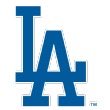Eight of the top 10 teams could comfortably be called rebuilders, teams that traded away major-league talent in 2016 to add prospects. Even the Yankees, whether or not they used the term, were in rebuild mode last season, landing three top-100 prospects in their two big deadline deals. And yet there's also one team here that nearly reached the World Series last season, but is this high in the organization rankings because of the money it spent on Cubans in 2015 and because of some shrewd drafting that predates the current front office.
2016 rank: 1
Atlanta has been hoarding prospects, especially pitching prospects, for two years now, and the result is a system that is primed to produce good young players just as the team moves into its new stadium.
This torrent of arms has entered the organization from two avenues. General manager John Coppolella has been trading for young pitching at every opportunity, and scouting director Brian Bridges has crushed pitching in his two drafts at the helm. There are players in this system with viable cases to be in the global top 100 but struggle to crack Atlanta’s top 10. They just took Ian Anderson third overall in the draft and he couldn’t even crack their top five. Their high-A rotation in 2017 could include four first-round picks and a major international signing, only one of whom will be 21 on opening day. It’s as if someone told Coppolella the axiom that you can never have too much pitching, and he just said, “hold my beer.”
They do have position players, primarily guys up the middle, including three high-end shortstop prospects, multiple center fielders, and the best prospect from last year’s July 2 class, Kevin Maitan, who might not stay at shortstop but has earned comparisons at the plate to a young Miguel Cabrera. They do lack power bats in the system, primarily at the upper levels, but there is just so much pitching here that it overwhelms that concern -- and if they just have a normal attrition rate among that pitching depth, they’ll have plenty of young arms left over to fill a major-league need via trade.
Coppolella has stayed opportunistic this winter, adding prospects who had fallen out of favor with their organizations, including two of Seattle’s top six prospects. You can make an argument for the Yankees deserving the top slot; I won’t dispute that they have more position-player talent. My vote is for the deluge of arms and up-the-middle players heading for Atlanta, giving them the best farm system in baseball.
2016 rank: 13
I’m so glad something is finally going right for Yankee fans, who have been suffering for, like, seven whole years now, but this system is absolutely loaded.
Brian Cashman went bananas once he got the green light to turn the roster over, flipping two very good relievers for enormous packages that gave the Yanks three of their current top six prospects. The other three are all recent first-round picks, and the system is full of the products of the team’s drafts, a side benefit of the end of their trades of prospects for veterans to prop up the aging big-league roster.
The system just keeps on going, with tons of pitching depth, a passel of natural shortstops -- we need a better collective noun for that; a "belanger" of shortstops, perhaps -– who will end up playing all over the diamond, and a lot of outfielders who rake. Even Dermis Garcia, who isn’t among their 20 best prospects, has 80 raw power and finished second in the advanced-rookie Appalachian League in homers as an 18-year-old.
There’s no weakness here. They will trot out teams full of prospects at every level, and several of them will show up in the Bronx this year. I don’t know if Gleyber Torres is the new Jeter or James Kaprelian the new Pettitte, but I’ll take that bet.
2016 rank: 20
You could make a compelling case for any of the top three teams on my list to be first overall. In San Diego’s case, the argument would be that they boast more upside potential, more guys with huge ceilings that are 10 percent likely to happen (or less) than any other system.
The Padres went very young in their rebuild, and they went big. Six of their top 10 guys were 20 or younger in 2016, and they signed a huge batch of teenagers on July 2, dominating the class among both pitchers and position players. Their draft similarly went for high-ceiling players, leading off with Cal Quantrill -- who in hindsight might have been the best prospect in the class -- with several other rolls of the dice on other pitchers coming off injuries who are showing positive early returns.
They’re third on this list because nearly all of that value is far from the majors, and there’s risk on every one of those guys -- every teenage pitcher is a risk because of the natural attrition rate of arms, and some of these hitters haven’t even sniffed full-season baseball yet. They’re also more pitching-heavy, which entails a little more risk but probably makes sense given the market price for pitching. The major-league team might be ugly this year, but their affiliates will be fascinating to watch.
2016 rank: 8
The Pirates return their top five prospects from last year, three of whom really boosted their stock and the likelihood of reaching their ceilings, and they added another premium guy to the mix with the emergence of 2014 draft pick Mitch Keller, an Iowa high school product who improved in every possible way in 2016.
Cole Tucker, their first pick from 2014, had a mostly positive return from shoulder surgery and returns to their top 10. Nick Kingham, who was a top 100 prospect before 2015, returned from Tommy John surgery and could see the big-league rotation this year. They also have stocked their upper levels with relief prospects who should help them avoid having to pay anyone to handle the seventh through ninth innings for them.
If there’s a weakness here, it’s that they’re not as deep as the three teams ahead of them, in part because they traded two second-tier prospects to Toronto to lose Francisco Liriano’s salary. I was not as big a fan of their 2016 draft class as I was of their drafts the last few years before that.
But the Pirates should be in good shape to remain contenders for the next few years by turning over the big-league roster to the likes of Austin Meadows, Josh Bell and Tyler Glasnow, freeing up the cash to spend on pieces they can’t supply internally.
2016 rank: 2
The top of the Dodgers’ system rivals anyone’s. They have four top prospects whom you could legitimately give a 20 percent chance to become stars in the big leagues, although two are pitchers, one of whom has already blown out his elbow once and the other of whom struggled to throw strikes when he first signed.
They’ve put money into the international market, aiming for ceiling, and have been more conservative in the draft, looking for lower-floor guys early and taking fliers after the second or third round. The system has also gotten deeper in some ways but lost two elite guys to promotion last year -- one of those won Rookie of the Year, you may have heard of him -- and depth in the midyear trade that brought in Rich Hill and Josh Reddick.
There are systems that run deeper in likely regulars, because those teams have been able to focus just on building without having to balance that and contention, but for a team this good to have this kind of star potential in full-season ball is remarkable.


 1.
1.  2.
2.  3.
3.  4.
4.  5.
5.